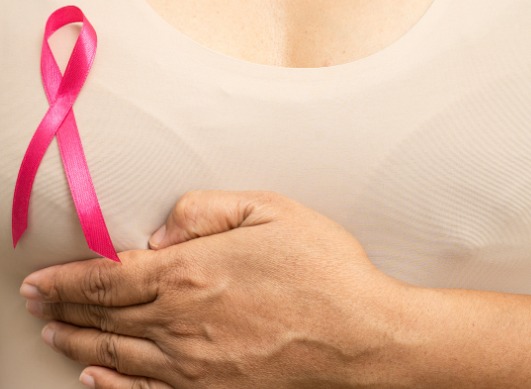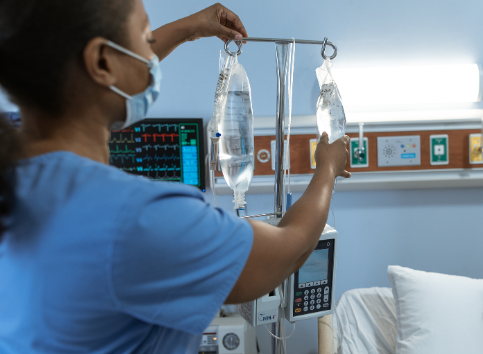- Home
- Forums
- Breast cancer Forum
- Research and useful tips - Breast Cancer
- How to exercise safely with breast cancer
Patients Breast cancer
How to exercise safely with breast cancer
- 109 views
- 2 times supported
- 2 comments
All comments
![]()
maddoglady
Good advisor
![]()
maddoglady
Last activity on 04/01/2023 at 12:00
Joined in 2016
109 comments posted | 29 in the Breast cancer Forum
1 of their responses was helpful to members
Rewards
-
Good Advisor
-
Contributor
-
Committed
-
Explorer
-
Evaluator
I used to do much more circuit training and running, however have found that since my diagnosis I've got much less energy and certainly reduced strength and flexibility. I've also found that little and often has worked much better for me. I also used to do boxing training but am concerned about lymphedema so don't do that as often. I find that my balance is still not as good as it used to be so running has fallen a bit by the wayside.
Gyms and exercise classes didn't particularly appeal and the thought of having to admit to being a "survivor" is utterly repulsive so I work out at home using Apps and DVD's. I've found some brilliant Apps on Kindle that have short 5 minute circuits so I can do as much or a little as I feel able. I always warm up before hand and stretch afterwards. It didn't occur to me to ask my doctor what I could and couldn't do and I relied more on how I felt and listened to my body.
I currently practise yoga and pilates and do some circuit training. Yoga helps with flexibility and strength and mental balance. Pilates is good for core strength and the circuit training helps with overall fitness.
It has taken years to get back to what I consider a reasonable level of fitness. I've given up on trying to be the person I was, I think that particular ship has sailed! I've also started learning to meditate, but that is very much a work in progress!
See the signature
Maddoglady!

Unregistered member
I too have given up trying to find myself..im happy in my skin now more then I was before breast cancer ..im over weight too but I'm not beating myself up like i used to i just wear bigger sizes...im trying to lose the weight but I'm not killing myself I'm finding a day at a time works for me ..wil prob take me years to shift it but I'm not huge in size 16/18
Give your opinion
Survey
Survey
Members are also commenting on...
Articles to discover...

10/10/2023 | Testimonial
Paget's disease of the nipple: "Don't let waiting for a diagnosis deplete your reserves!"
Medication fact sheets - patient opinions...
Subscribe
You wish to be notified of new comments
Your subscription has been taken into account







Margarita_k
Good advisor
Margarita_k
Last activity on 07/10/2020 at 11:39
Joined in 2016
1,195 comments posted | 48 in the Breast cancer Forum
2 of their responses were helpful to members
Rewards
Good Advisor
Contributor
Messenger
Committed
Explorer
Evaluator
Exercise before and after breast cancer surgery is recommended by many medical professionals. However, some of them worry that some strength training exercises can provoke lymphedema - swelling of the soft tissues of the arm, hand, trunk, or breast that may be accompanied by numbness, discomfort, and sometimes infection.
So it is essential to be careful with taking up physical activity. Here are some steps to take to make sure you exercise safely:
1. Get the OK from your primary care physician and surgeon. Discuss with both your primary care doctor and your surgeon the exercises you plan to do. Ask them if there are any movements you should avoid or if you should limit the range of motion they involve. Discuss any medicines you’re taking and how they may affect your ability to exercise. Also discuss any other medical conditions you have (asthma or osteoporosis, for example) and how they may affect your ability to exercise.
2. Take any precautions that are necessary. If you’ve been diagnosed with lymphedema or are very worried about it, talk to a lymphedema specialist about precautions that might be right for you. If you’ve been diagnosed, these precautions may include wearing a well-fitted compression garment or possibly wearing protective gloves. If something doesn’t feel right, stop immediately and talk to your doctor or lymphedema specialist. You can also read the National Lymphedema Network’s Position Paper on Exercise to learn about their recommended precautions.
3. Do your warm-ups. Before you do any type of exercise, make sure you warm up by walking for 5 to 10 minutes or taking a shower to warm up your muscles. A complete flexibility program -- stretching all major muscle groups -- should be part of the warm-up.
4. Make slow and steady progress. Expect to improve gradually. Every person is unique, every breast cancer is unique, and every treatment plan is unique. Don’t compare your progress to anyone else’s or to yourself before breast cancer. Give yourself the time you need to recover and get strong, flexible, and healthy.
5. Focus on form. Perfect form is better than holding a stretch longer or doing more reps of an exercise. Make sure your form is excellent, even if it means doing less. In other words, if a stretch calls for holding the position for 30 seconds and you can only hold it for 15 seconds unless you do something you’re not supposed to do (bend your knees or arm, for example), it’s better to hold the stretch for only 15 seconds with perfect form rather than 30 seconds with bad form.
6. Stop if you feel pain. Check your form or make your movements smaller so you feel no pain. If it still hurts, talk to your doctor, physical therapist, or certified personal trainer about modifications.
7. Rest as needed. If you’re sick with a cold or infection or feel especially tired, take a day off.
8. Do your cool-downs. After each exercise session, cool down by walking for 5 or 10 minutes and stretching all the major muscle groups.
9. Tell your instructor you’re a survivor. If you take a yoga, aerobics, or other exercise class, be sure to talk to the instructor before class and explain that you’re a breast cancer survivor. Tell the instructor what you can and can’t do and ask for modifications for any movements you can’t do. Do the same thing if you work out with a certified personal trainer. Let her or him know that you’ve been treated for breast cancer so the exercises can be scaled appropriately.
Some other exercises may be risky for some breast cancer patients. It’s important to remember that everyone is different. You may be able to do some or all of the exercises listed below with no problems. Still, since everyone woman is affected in a unique way after treatment, these exercises may not be right for everyone, which is why we’ve listed them here.
Possibly risky exercises for breast cancer survivors include:
- Swimming laps using strokes with arm movements. Swimming laps with the arms resting on a kickboard or other floating device may be better for some women.
- Using resistance bands. When pulling on a resistance band, you don’t know how much resistance is being generated; it may be too strenuous for your arm.
- Body weight exercises such as pull-ups and push-ups. It’s difficult to know how much weight you are moving; the movements may put too much stress on the shoulders and arms.
- Some yoga poses such as downward dog and inversions. These poses may put too much weight on the arms.
P90X. Some of the exercises in this program may cause too much stress on the arms and shoulders if done as recommended. Many women modify the movements to make them less stressful on the arms.
- Elliptical/cross-training machines, tennis, and cross-country skiing. If you’re starting a new exercise program after breast cancer surgery, you may want to avoid working the arm on the side where you had surgery by doing additional exercise. For example, if you start an exercise program designed specifically for breast cancer survivors, you may want to wait to use a cross-training machine, play tennis, or do anything else that works your arm at the same time until your arm is stronger. After you’ve been doing the exercise program for a month or so, you may be able to gradually introduce other exercises that use the arms.
Source: breastcancer.org
____________________________
Do you do sport? What kind of sport? What has changed in your usual physical activity routine after your diagnosis?